#Vajrayana Buddhism
Text

Chhinnamasta⚡Chhinnamunda
#divine feminine#shakti#devi maa#chinnamasta#chinnamunda#chhinnamasta#chhinnamunda#buddhist art#vajrayana buddhism#hinduism#tantra
178 notes
·
View notes
Text
More on the Origins of Sun Wukong's Golden Headband
I've previously suggested that the Monkey King's golden headband (jingu, 金箍; a.k.a. jingu, 緊箍, lit: “tight fillet”) can be traced to a ritual circlet mentioned in the Hevajra Tantra (Ch: Dabei kongzhi jingang dajiao wang yigui jing, 大悲空智金剛大教王儀軌經, 8th-century). This is one of the "Five Symbolic Ornaments" or "Five Seals" (Sk: Pancamudra, पञ्चमुद्रा; Ch: Wuyin, 五印; a.k.a. "Five Buddha Seals," Wufo yin, 五佛印), each of which is associated with a particular Wisdom Buddha:
Aksobhya is symbolised by the circlet, Amitabha by the ear-rings, Ratnesa by the necklace, Vairocana by the hand ornaments, [and] Amogha by the girdle (Farrow, 1992, p. 65). [1]
輪者,表阿閦如來;鐶者,無量壽如來;頸上鬘者,寶生如來;手寶釧者,大毘盧遮那如來;腰寶帶者,不空成就如來。
Akshobya is known to have attained Buddhahood through moralistic practices (Buswell & Lopez, 2014, p. 27). Therefore, this explains why a headband would be used to rein in the unruly nature of a murderous monkey god.
The original Sanskrit Hevajra Tantra calls the circlet a cakri (चक्रि) or a cakrika (चक्रिका) (Farrow, 1992, pp. 61-62 and 263-264, for example), both of which refer to a "wheel" or "disc." The Chinese version uses the terms baolun/zhe (寶輪/者, "treasure wheel or ring") and just lunzhe (輪者, "wheel" or "ring").
One of the more interesting things I've learned is that these ornaments were made from human bone. One source even refers to them as "bone ornaments" (Sk: asthimudra, अस्थिमुद्रा) (Jamgon Kontrul Lodro Taye, 2005, p. 493, n. 13). [1]
Can you imagine Sun Wukong wearing a headband made from human bone?! How metal would that be? Finger bones would probably do the trick.
Note:
1) Another section of the Hevajra Tantra provides additional associations:
The Circlet worn on the head symbolises the salutation to one's guru, master and chosen deity; the ear-rings symbolise the yogi turning a deaf ear to derogatory words spoken about the guru and Vajradhara; the necklace symbolises the recitation of mantra; the bracelets symbolises the renunciation of killing living beings and the girdle symbolises the enjoyment of the consort (Farrow, 1992, p. 263-264).
謂頂相寶輪者,唯常敬禮教授阿闍梨及自師尊;耳寶鐶者,不樂聞說持金剛者及自師尊一切過失、麁惡語故;頸寶鬘者,唯常誦持大明呪故;手寶釧者,乃至不殺蠕動諸眾生故;腰寶帶者,遠離一切欲邪行故。
2) For more info on the association between Hindo-Buddhist practices and human remains, see "charnel grounds".
Sources:
Farrow, G. W. (1992). The Concealed Essence of the Hevajra Tantra: With the Commentary Yogaratnamālā. Delhi: Motilal Banarsidass.
Jamgon Kontrul Lodro Taye (2005). The Treasury of Knowledge, Book Six, Part Four: Systems of Buddhist Tantra (The Kalu Rinpoche Translation Group, Trans.). Ithaca, NY: Snow Lion.
#Golden headband#tight fillet#Sun Wukong#Monkey King#Esoteric Buddhism#Vajrayana Buddhism#ritual#Journey to the West#JTTW#Lego Monkie Kid
48 notes
·
View notes
Text
Tibetan Vajrayana Buddhist Dancing Costumes

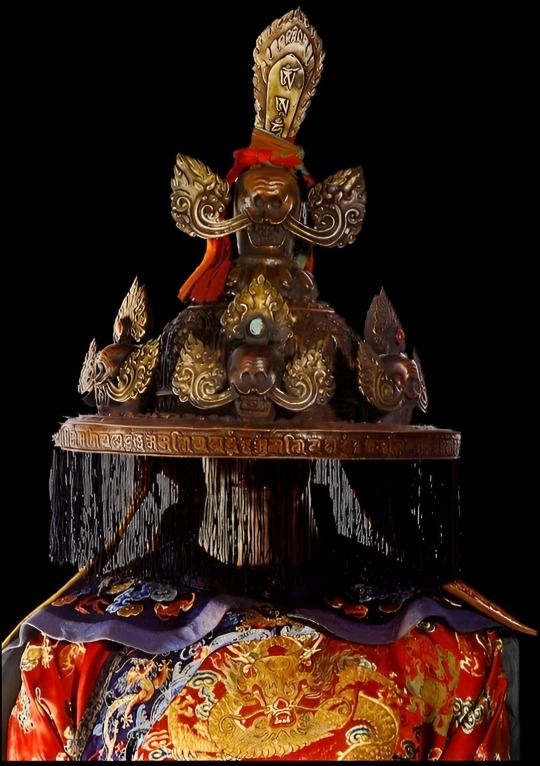


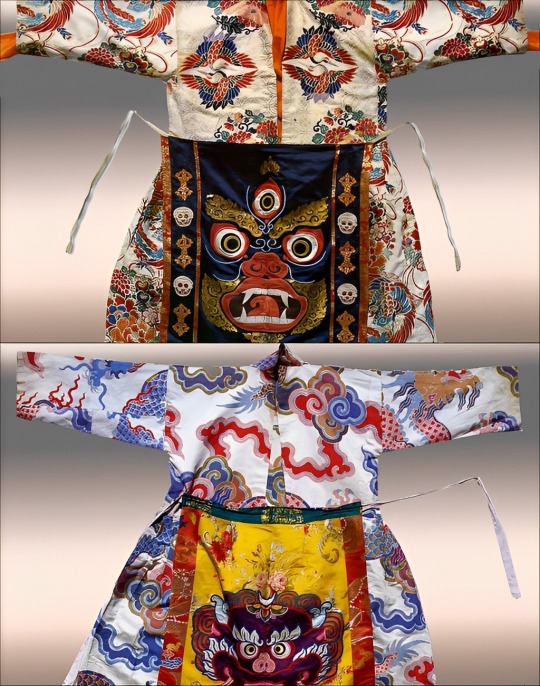
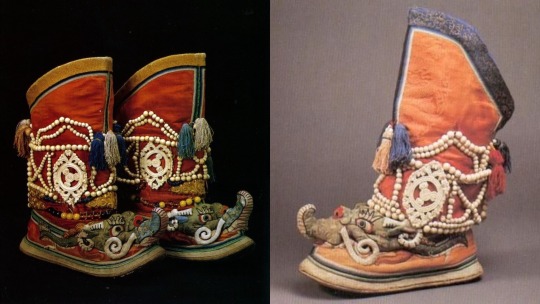


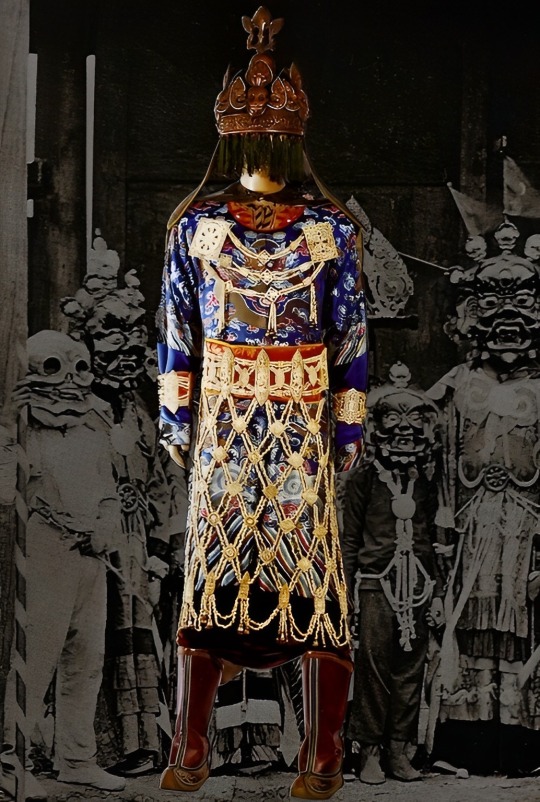

Photos scanned from a 2011 Vajrayana Buddhism Dancing Costume catalogue. © Ais Loupatty & Ton Lankreijer, and Kashba. See rest of catalogue on their website here.
The costumes blend elements from Tibetan, Mongolian, and Nepalese cultures. They may also be used for shamanistic and/or tantric rituals.
#tibet#nepal#mongolia#china#buddhism#vajrayana buddhism#shamanism#tantric buddhism#asia#asian culture#asian art#dancing costume#folk dance#culture
79 notes
·
View notes
Text
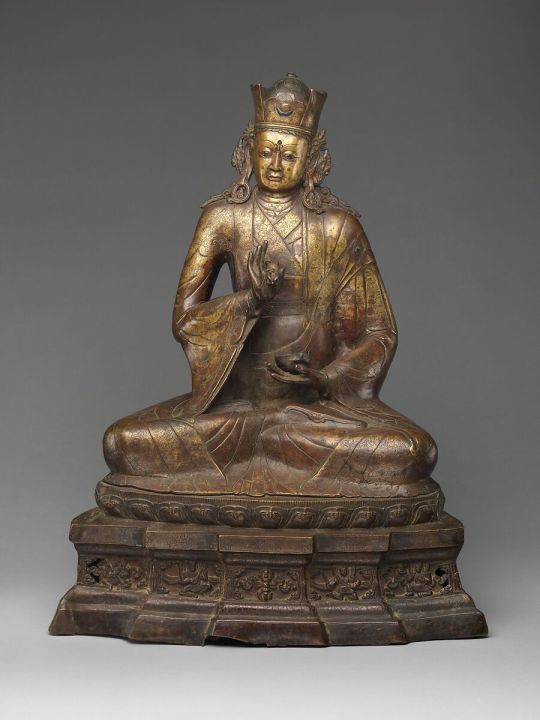
The Spiritual Master Padmasambhava
Western Tibet or Ladakh, 14th century
This portrait of Guru Padmasambhava (Lotus-Born) is one of the earliest known effigies of the eighth-century Indian mystic, revered as the leading propagator of tantric Buddhism in Tibet. He is believed to have gone to Tibet at the invitation of King Trisong Detsen and there founded the Nyingma Order of Tibetan Buddhism. Popularly known as Guru Rinpoche, here he sits enthroned in a yogic posture and holds a thunderbolt scepter (vajra), symbolizing the clarity of pure Buddhist thought, and a skull cup (kapala), representing detachment. He wears the distinctive cloth cap of his order and has distended earlobes, the mark of an enlightened being. His facial expression is accessible, attentive, and spiritually alive. [...].
9 notes
·
View notes
Text
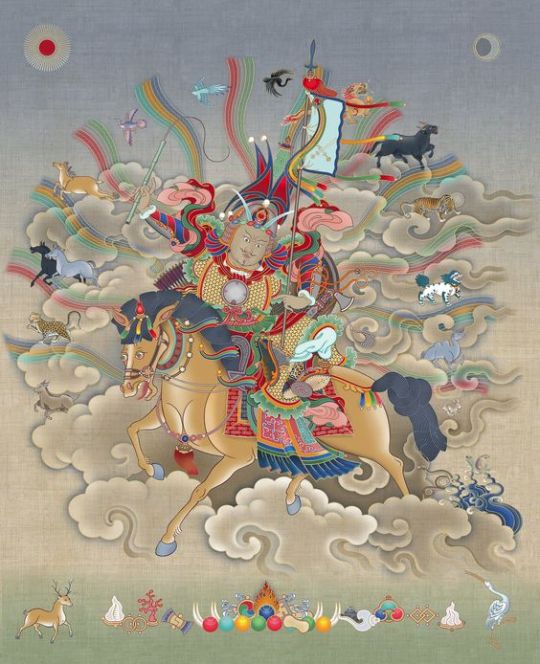
Remember, O Chela, the marks of a true Warrior:
To die a thousand deaths with the willingness of dying.
To endure a million cut-wounds while in the verge of living.
To lose an infinitefold of attachments in this world of
impermanence.
To see joy as pain, and pain as joy; until none there be as such and such.
To unveil the scintillating countenance of Reality under the heat of the scorching sun.
To die in one realm in order to give birth to a thousand worlds.
To manifest a single wish for the collective desire of all.
To see free and let live.
These, O chela, are the marks of a true warrior!
(written September 2013, Baguio City)
#hinduism#buddhism#vajrayana#vajrayana buddhism#sanatana dharma#shaivism#dharma#buddha#religion#poetry#poems#poems and quotes#poems on tumblr#spiritual#spirituality#warrior poet#spiritual warrior#tibetan buddhism#east asia#literature#literature quotes
10 notes
·
View notes
Photo

In this thangka painting Red Tara is depicted in her peaceful manifestation.
She is seated with the right leg slightly extended like the most common representations of Green Tara. The right hand is extended across the knee holding the stem of a blue utpala flower with a hook on top of it. The left hand is positioned in front of the heart holding a golden lasso.
Red Tara is the manifestation of Tara expression of awareness of all phenomena. In Vajrayana Buddhism the practice of Red Tara is based on the ritual called the Mandala of wish-fulfilling essence that focuses on turning material desires into compassion and love. The ritual includes yoga, healing practices and teachings on the nature of mind.
#religion#buddhism#tibetan buddhism#vajrayana buddhism#tara#red tara#goddess#bodhisattva#art#divinum-pacis
32 notes
·
View notes
Text
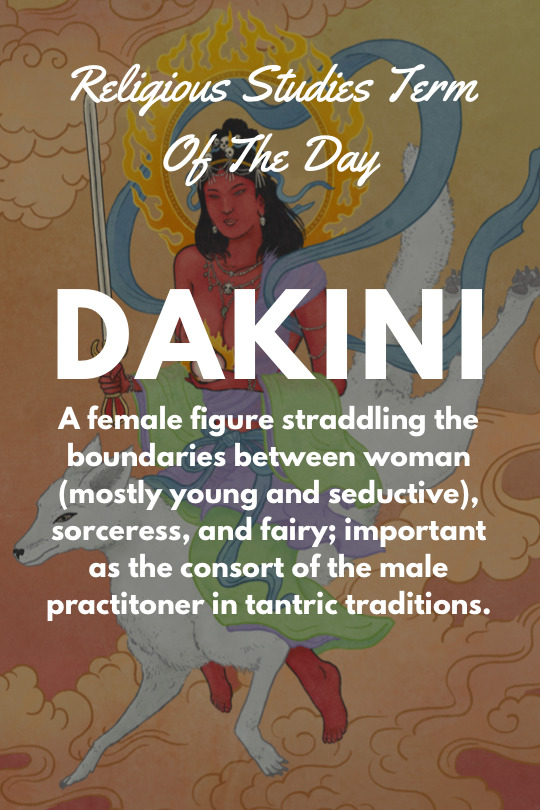
Religious Studies Term Of The Day: Dakini
Hey everyone! Now that the Christmas season is over, it’s back to Buddhism! Today I wanted to talk about a concept that I don’t think is super well known about in Buddhism: the Dakini. Dakini are complex creatures to talk about, but they are a sort of supernatural term that is pretty close to the English idea of a witch, or maybe even a fairy in some sense. They aren’t like a widespread Buddhist idea, but only find themselves in tantric traditions like the Vajrayana Buddhists. In these traditions, sex, whether it be literal or metaphorical, is a pathway to enlightenment, and it requires male and female sexual energy to accomplish that. I’m not an expert so please correct me if I am wrong, but my readings on the subject seem to imply that the Dakini is the source of the female sexual energy needed for the rituals, that she, whether she is a low class woman brought in for the job or an actual supernatural creature summoned for the task.
This term is super vague and flexible, so I have a hard time pinning it down, but a great example of a dakin would be Ma-gcig Lab-sgron, a figure of Tantric Buddhism born in 1055. She is complicated to pin down, as she is a real figure, but also a supernatural one, a person who has many titles and attributes that would take a while to look into, but she might be a good starting place for anyone curious about what a dakini means. But for now, that’s all I have to share. I hope you’re all safe and have a wonderful day.
#religiousstudies#religious studies#religion#religiousliteracy#religions#women and religious traditions#leona m anderson#pamela dicky young#Eva k neumaier#oxford#buddhist#buddhism#tantric buddhism#vajrayana buddhism#tibetan buddhism#dakini#woman#sorceress#fairy girl#tantric#factsdaily#fun facts#factoftheday
6 notes
·
View notes
Text
Equanimity sits on the moon
Black hair on glowing white body
Seated on vajra white lotus petals
Contemplating the blue marble and void
Form has emptiness
Emptiness has form
Separation lacking
Yet both completely full
The goddess embraces her lover
Endless appearance over vast expanse
Pulsation is the essence of karma
Infinite change is the changeless knowledge
#buddhism#poetry#vajrasattva#meditation#vajrayana buddhism#vajrayana#tantra#shiva#shakti#bhairava#mahakali
9 notes
·
View notes
Text

Vajrayana Buddhism and the Life, Death and Rebirth Process (Bardos) | Planet Dharma
Learn about the fascinating life, death, and rebirth process, or bardos, from the Vajrayana Buddhist perspective. Doug Duncan Sensei and Catherine Pawasarat Sensei were guest speakers at the Buddhist Contemplative Care for End of Life Speakers Series. This two-hour lecture shares the Tibetan Buddhist view of the death process, how to support others going through it, and how to work with it as we go through it ourselves.
Buddhism is well known for its intricate mapping of consciousness and its manifestations. In this philosophical paradigm, life, death, and rebirth are processes, not events.
Tibetan Buddhism observes these processes as six primary “Bardos” (Tibetan for “gap”). Three are Living Bardos (life, meditation, sleeping) and Death Bardos (dying, moment of death, and moving towards the next rebirth). Bardos often describe the journey that we make after death, before taking a new birth, though they can also refer to any transformation in life and death.
Know More about Life, Death and Rebirth Process
0 notes
Text
Book Review | Introduction to Tantra: The Transformation of Desire by Lama Yeshe
“Introduction to Tantra: The Transformation of Desire” by Lama Yeshe is a profound exploration of the esoteric world of Tibetan Buddhism, specifically the Vajrayana tradition of Tantra. Lama Yeshe, a highly respected Tibetan Buddhist teacher, takes readers on a journey into the complex and mystical realm of Tantra, providing a clear and accessible introduction to this ancient spiritual…

View On WordPress
#bodhicitta#buddhism#desire#enlightenment#nondual enlightenment#philosophy#psychology#spirituality#tantra#transformation#transmutation#vajrayana#vajrayana buddhism
1 note
·
View note
Text

Wisdom dakinis, sky dancers, are the feminine embodiment of bliss and freedom that are at the essence of enlightenment. They can arise in any form, terrifying or stunningly beautiful, to aid tantric practitioners in cutting through their ego.
Dakinis will reveal that which you yourself are blind to and that which gets in the way of your path to truth.
All women are dakinis one way or another.
#tibetan buddhism#thangka art#vajrayogini#divine feminine#feminine wisdom#female empowerment#thangka#vajrayana#Dakini
44 notes
·
View notes
Text
Inner peace is not won
Through peace.
Peace does not test you
Does not bend
Or break you
It does not reshape you.
Peace is a comfort earned
Through war
With the demons
That plague your mind
Fester in your soul
And hold you to the fires
Of revelation.
Embrace
Your Wrathful Aspect
And defeat the demon
That is
The Self
#my writing#poetry#poem#creative writing#spilled ink#quick write#buddhism#buddhist inspired#vajrayana#tibetan buddhism#writers#writers and poets#writers on tumblr#poets on tumblr
32 notes
·
View notes
Text

Ritual objects
2 notes
·
View notes
Text
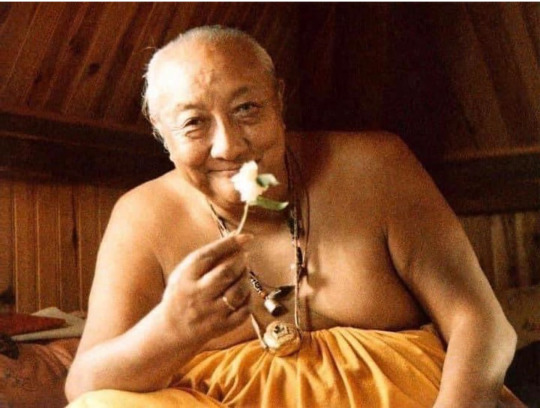
STAY FREE IN UNSHAKEN SERENITY
"Maintain that state of simplicity. If you encounter happiness, success, prosperity, or other favorable conditions, consider them as dreams or illusions, and do not get attached to any of them.
If you are stricken by illness, calamity, deprivation, or other physical and mental trials, do not let yourself get discouraged, but rekindle your compassion and generate the wish that through your suffering all beings suffering may be exhausted.
Whatever circumstances arise, do not plunge into either elation or misery, but stay free and comfortable, in unshaken serenity."
~ H.H. Dilgo Khyentse Rinpoche
#Dilgo Khyentse Rinpoche#buddha#buddhist#buddhism#dharma#sangha#mahayana#zen#milarepa#tibetan buddhism#thich nhat hanh#Padmasambhava#Guru Rinpoche#four noble truths#amitaba buddha#dzambala#dali lama#dzogchen#dhamma#buddha samantabhadra#bodhidharma#rainbow body#Bodhisattva#manjushri#vajrasattva#vipassana#vajrapani#vajrayana
11 notes
·
View notes
Text

Early Buddhist depiction of a bodhisattva with lotus (padma) in hands.
#buddhism#buddha#mahayana#blue#vajrayana#nirvana#samadhi#meditation#cave paintings#padma#lotus#dukkha#bodhisattva#☸️
13 notes
·
View notes
Text

Religious Studies Term Of The Day: Tantra
#religiousstudies#religious studies#religion#religiousliteracy#religiouswritings#women and religious traditions#leona m anderson#oxford#pamela dicky young#Eva k neumaier#vajrayana buddhism#tantric buddhism#buddhist wisdom#buddhist teachings#buddhist#buddhism#tantra#tibetan buddhism#vajrayana#buddha#fun facts#factsdaily#factoftheday#random facts
1 note
·
View note